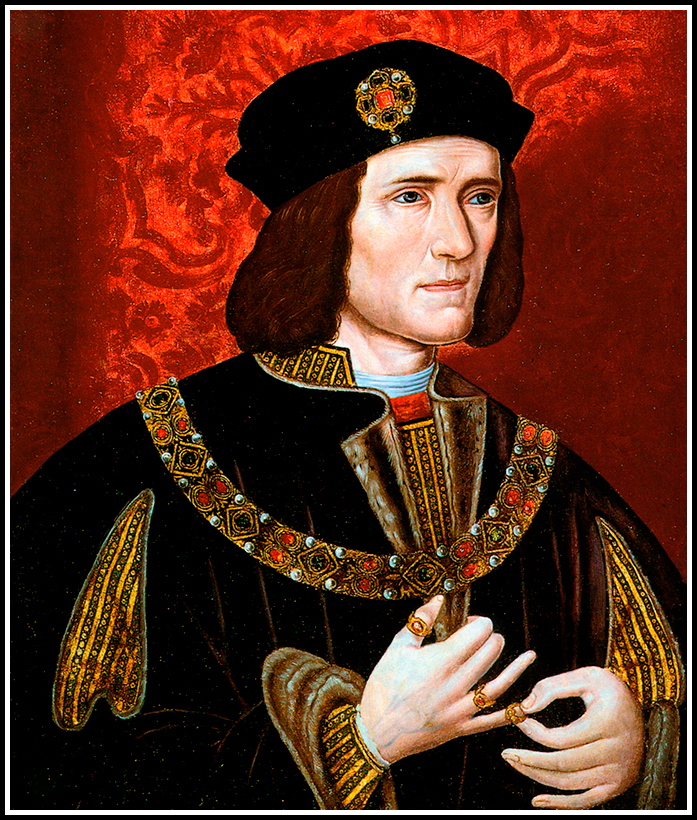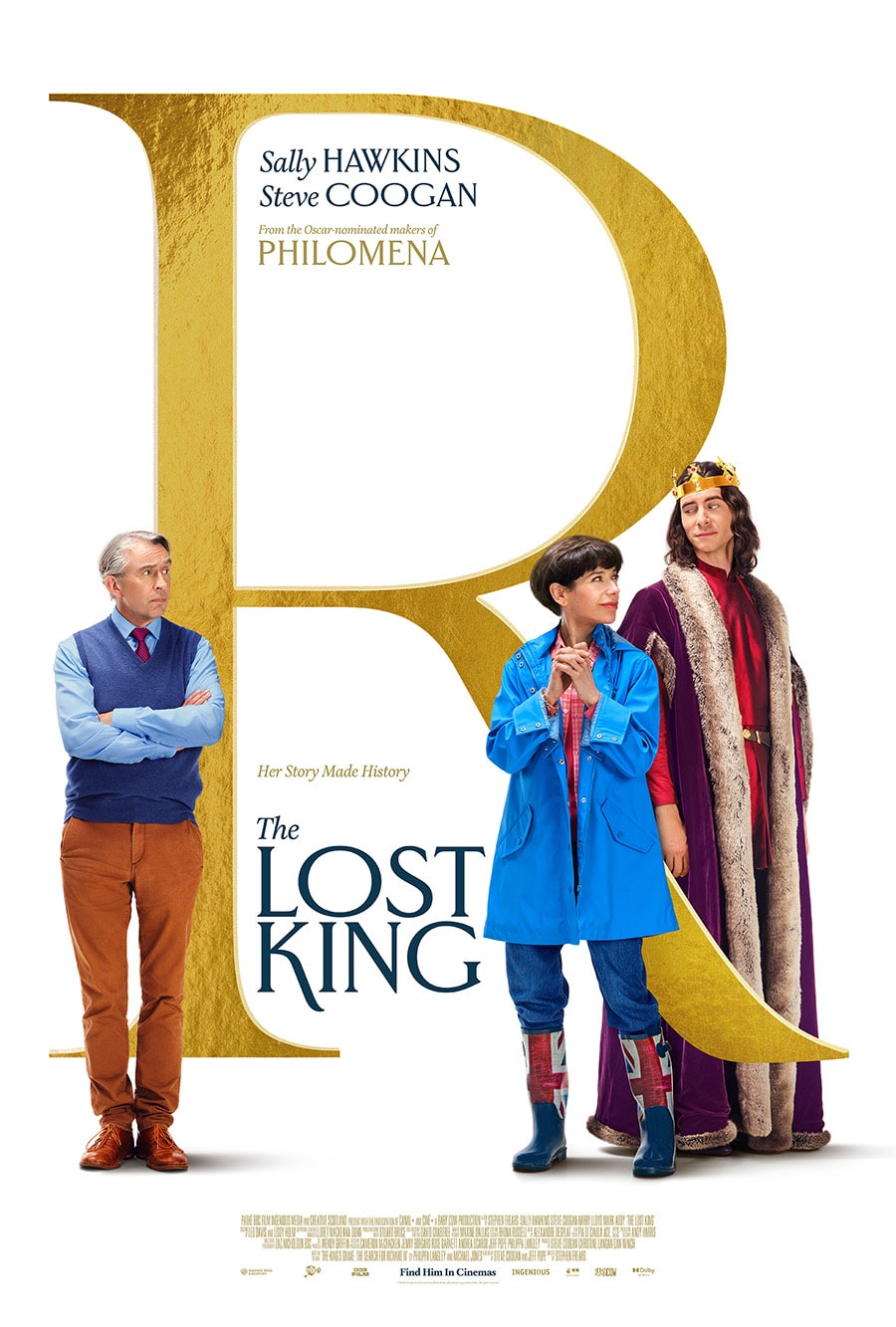
Richard III
Modern historians are increasingly inclined to believe that Richard III was a brave and valiant soldier, a loyal brother, and an intelligent, able king popular with his subjects and defeated only through treachery. The real Richard III seems to be the victim of a deliberate campaign of slander devised by his Tudor successors who snatched his throne.
However, some earlier historians also doubted the truth of Shakespeare’s portrayal of Richard III as a murderous villain and a hunchback. For example, V.B. Lamb wrote in 1959: “Scrape away the accumulated filth of tainted evidence which has disfigured the memory of Richard III for the past 500 years, and there is really very little that remains mysterious about the outlines of his story. In fact, it can be summed up in one sentence: he accepted his dead brother’s throne when it was offered to him at a moment of desperate crisis, and no record survives of the ultimate fate of his nephews.”
At the end of False Rumours you will find my Author’s Note which explains why I think the princes in the Tower were not killed on orders from their uncle and why they escaped to Lisbon via Luxembourg and Condom, disguised as pilgrims. This theory is a lot more plausible than the one that the princes’ bones were found in 1674 at the bottom of a staircase in the Tower of London.
The Richard III Society
In the belief that many features of the traditional accounts of the character and career of Richard III are neither supported by sufficient evidence nor reasonably tenable, the Richard III Society aims to promote, in every possible way, research into the life and times of Richard III, and to secure a reassessment of the material relating to this period, and raise awareness of the role in history of this monarch.
The society is perhaps best summed up by its Patron, the present Richard, Duke of Gloucester: “. . . the purpose – and indeed the strength – of the Richard III Society derives from the belief that the truth is more powerful than lies; a faith that even after all these centuries the truth is important. It is proof of our sense of civilised values that something as esoteric and as fragile as reputation is worth campaigning for.”
The Missing Princes Project
The Missing Princes Project was launched in the summer of 2015, with three new lines of investigation. By December 2016 it had 75 lines of investigation, and I hoped that the most convincing one would be the arrival of the missing princes at the home in Lisbon of Sir Edward Brampton (where he was known as Duarte Brandão).
Following seven years of intensive research by Philippa Langley and her international team, her book ‘The Princes in the Tower: Solving History’s Greatest Cold Case’ was published on 17 November 2023. The book reveals the findings of the Missing Princes Project. Using investigative methodology, it places this most enduring of mysteries under a forensic microscope for the first time, unearthing astonishing new archival discoveries along the way.
I discovered to my delight that the princes really did leave England and that numerous administrative accounts and a four-page diary show very clearly where and how they lived. Edward V was in Guernsey (where Sir Edward Brampton was Governor), leading invasion forces into England. His younger brother, Richard, Duke of York, really was ‘Perkin Warbeck’. They may well have travelled through France and Spain to Lisbon. My hopes have been supported.
A documentary to accompany Philippa Langley’s book was shown on Channel 4 (in UK) on 18 November, on PBS Secrets of the Dead Series (in US) on 22 November, and on SBS (in Australia) and on SVT (in Sweden) on 26 November. ‘The Lost Princes’ documentary featured Philippa, accompanied by criminal barrister Rob Rinder, crossing the continent to find the truth about what happened to the princes. It is a startling truth.
Looking for Richard Project and ‘The Lost King’

In 2013 Philippa Langley and Michael Jones published their book ‘The King’s Grave: The Search for Richard III’. ‘The Lost King’ film was made in 2022 (and available as a DVD too in 2023) as a dramatisation of how they found the grave. It was directed by Stephen Frears, with screenplay by Steve Coogan and Jeff Pope, starring Sally Hawkins, Steve Coogan and Harry Lloyd.
Philippa Langley is a screenwriter who wanted to write a screenplay about Richard III. While researching his life and death she had a feeling that she had found the site of his grave – under the Social Services car park in Leicester.
In 2005 Philippa contacted Dr John Ashdown-Hill, historian and genealogist, who had already discovered the mtDNA of Richard III’s sister, Margaret of Burgundy, and her descendant Joy Ibsen and which he later published in his book The Last Days of Richard III (2009).
In 2008, writer Annette Carson asserted in her book Richard III, The Maligned King that the king’s grave was probably under the Social Sciences car park in Leicester, the same resting place asserted by Langley, her research indicating the northern end of the car park. The following year, Langley formed the Looking for Richard Project. Founder members included historian Dr David Johnson and his wife, Wendy. The project was joined shortly afterwards by Ashdown-Hill, and in 2011 by Carson. With help from Leicester City Council and, after an international appeal to the membership of the Richard III Society worldwide, University of Leicester Archaeological Services was commissioned by Langley to excavate the car park. Thereafter, Channel 4 and Darlow Smithson Productions began filming the dig for Richard’s grave on 25 August 2012, the anniversary of the king’s hasty burial in 1485 in Greyfriars Church.
King Richard’s remains were discovered on the first day of the search, in what was originally the choir of the church, a suitable burial place. The discovery was in the northern end of the Social Services car park. Osteologist, Dr Jo Appleby confirmed that the skeleton showed no sign of disability, no hunchback, no withered arm. Instead it had scoliosis, a laterally curved spine which is a condition, not a disability, and which does not rule out an active lifestyle, fighting battles while wearing armour. This had been proved by Dominic Smee who has a similar scoliosis and for whom armour has recently been made in order to test what his mobility as a medieval fighter would have been.
King Richard III was reburied on 26 March 2015 in Leicester Cathedral, with dignity and honour during a service presided over by the Archbishop of Canterbury and the Bishop of Leicester. The Royal Family was represented by HRH The Countess of Wessex and TRH The Duke and Duchess of Gloucester.
Recommended books
- The Daughter of Time by Josephine Tey (1951)
- Good King Richard? by Jeremy Potter (1983)
- Royal Blood by Bertram Fields (1998)
- Richard The Third by Paul Murray Kendall (1995, 2002)
- Psychology of a Battle: Bosworth 1485 by Michael K. Jones (2002)
- Perkin: A Story of Deception by Ann Wroe (2003)
- Richard III: The Maligned King by Annette Carson (2009)
- The King’s Grave: The Search for Richard III by Philippa Langley and Michael Jones (2013)
- The Betrayal of Richard III by V.B. Lamb, revised by Peter Hammond (2015)
- Richard III: fact and fiction by Matthew Lewis (2019)
- Richard III and the Battle of Bosworth by Mike Ingram (2019)
- Richard III: Loyalty Binds Me by Matthew Lewis (2020)
- Richard III: Fact and Fictions by Matthew Lewis (2020)
- The Mythology of the Princes in the Tower by John Ashdown-Hill (2020)
- Domenico Mancini de occupatione regni Anglie. New Translation with Introduction and Historical Notes by Annette Carson (2021)
- The Survival of the Princes in the Tower: Murder, Mystery and Myth by Matthew Lewis (2023)
- The History of King Richard the Third by Sir George Buc (1619), edited by Arthur Kincaid (2023)
- The Princes in the Tower: Solving History’s Greatest Cold Case by Philippa Langley (2023)
